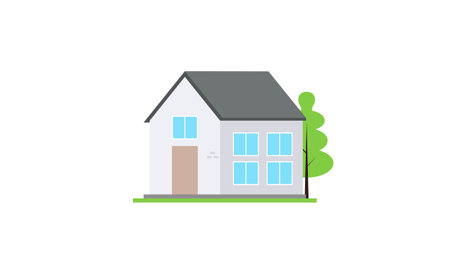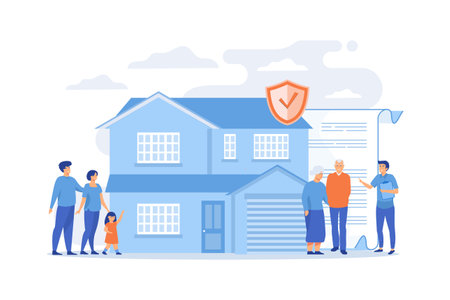Assessing Your Slope and Boundary Lines
Before you start driving posts or ordering lumber, it’s crucial to evaluate your property’s slope and clearly define your boundary lines. Building a fence on a slope in the U.S. comes with unique challenges, especially when it comes to terrain and legal regulations. Start by determining the degree of steepness—use a level or even a simple string line to gauge how much elevation change you’re dealing with from one end of your planned fence line to the other. The steeper the grade, the more strategic your fence design needs to be.
Next, check your soil stability. Rocky or loose soil can affect post anchoring and long-term durability. In some cases, you may need to reinforce posts or consider alternative footing methods for better ROI and lasting results. Don’t overlook local zoning laws or HOA rules; pulling up an official plot map and marking exact boundaries avoids disputes down the line. Getting this groundwork right not only saves money but also ensures your fence investment stands strong and legal for years to come.
Choosing the Right Fence Type for Sloped Yards
When your property sits on uneven ground, picking the right fence isnt just about privacy or security—its also a smart investment that boosts curb appeal and long-term value. Not every fencing material or style is up for the challenge of a slope. Let’s break down the top options for sloped yards, weighing out the pros, cons, and style points to help you make an informed decision that pays off.
Material and Style Options for Sloped Fencing
| Fence Type | Pros | Cons | Curb Appeal/Style |
|---|---|---|---|
| Wood (Picket/Privacy) | Classic look; customizable; can be stepped or racked to fit slope | Requires regular maintenance; can warp over time on steep slopes | Traditional American charm; high versatility for suburban homes |
| Vinyl | Low maintenance; weather-resistant; adaptable panels available | Higher upfront cost; limited color choices compared to wood | Crisp, clean lines; modern appeal, especially in white or tan |
| Metal (Aluminum/Wrought Iron) | Durable; great for racking along steep slopes; minimal maintenance | Less privacy; wrought iron can be pricey | Sleek, upscale look; boosts property value in many neighborhoods |
| Chain Link | Cost-effective; easy to install on uneven ground; durable | Less attractive; offers little privacy unless modified with slats or screens | Functional appearance but can be enhanced with greenery or inserts |
| Composite Materials | Eco-friendly options available; low maintenance; resists warping and fading | More expensive than wood or chain link; limited styles for steep slopes | Modern and tidy aesthetic; good fit for contemporary homes |
Stepped vs. Racked Fencing: Which Works Best?
The main methods for installing fences on slopes are stepping and racking. Stepped fencing uses level panels set at varying heights, creating a stair-step effect—great for pronounced grades but may leave gaps at the bottom. Racked fencing adjusts each picket or rail to follow the land’s contour, providing a smoother look and better ground coverage. Metal and vinyl systems often offer racking flexibility, while traditional wood is usually stepped. Picking the right approach will depend on your yard’s incline and your desired balance between aesthetics and function.
The Investment Angle: ROI and Neighborhood Appeal
A well-chosen fence type not only solves slope challenges but also increases your property’s market value and visual appeal. In the U.S., buyers appreciate fences that blend security with style—think wrought iron for elegance in historic districts, or classic wood picket fences in family neighborhoods. Consider the long-term return: investing a bit more upfront in materials like vinyl or aluminum often translates to years of low-maintenance enjoyment, fewer repairs, and a stronger first impression when it comes time to sell.

3. Step vs. Racked Fencing Methods
When it comes to building a fence on a slope, one of the most important decisions is choosing between stepped and racked installation methods. Each technique has its own pros and cons, and the right choice depends on your property’s unique topography and your aesthetic preferences.
Stepped Fencing uses level panels that are installed in horizontal “steps” up or down the slope. This method is straightforward, making it a popular option for DIYers and contractors alike. Stepped fences work best on steep slopes or when using rigid panel fencing like vinyl or wood privacy fences. However, stepped fences create gaps underneath each panel where the ground drops, which can be a concern if you want to keep pets in or critters out.
Racked Fencing, also known as “racking” or “contouring,” involves angling the fence rails so that the pickets follow the natural contour of the slope without leaving gaps at the bottom. This technique works best with flexible materials like aluminum or chain link fencing. Racked fences provide a seamless look and prevent unwanted gaps but may require more precise measurements and specialized hardware, potentially increasing installation costs.
So, when should you use each method? If your slope is steep or you’re working with rigid panels, go with stepped fencing for stability and simplicity. If your slope is gentle and you want a cleaner, gap-free appearance, racked fencing is your best bet. Understanding these differences ensures you’ll make the smartest investment for both function and curb appeal.
Dealing with Drainage and Erosion Control
When you’re building a fence on a slope, proper drainage and erosion control aren’t just nice-to-haves—they’re essential for protecting your investment. Ignoring these factors can lead to water pooling around your posts, rotting wood, rusting metal, and ultimately a failing fence. Below, we break down the practical strategies savvy American homeowners use to prevent water damage and soil loss when fencing on a grade.
Why Drainage Matters
Sloped land naturally channels water downhill, which means any poorly planned fence is at risk of becoming a dam or a gutter. The result? Accelerated soil erosion, unstable posts, and expensive repairs. Smart drainage planning helps maintain both the structural integrity and curb appeal of your property.
Practical Drainage Solutions
| Solution | Description | ROI Impact |
|---|---|---|
| Gravel Backfill | Place gravel at the base of each post hole to improve drainage and reduce rot. | Saves money by extending post life; reduces future maintenance costs. |
| French Drains | Add simple trench drains parallel to the fence to divert excess water away from posts. | Protects the entire fence line, avoiding costly re-installation due to washouts. |
| Raised Footings | Set posts on slightly raised concrete footings above grade level. | Keeps moisture from wicking up into the posts; enhances durability. |
| Erosion Mats & Plants | Install erosion control mats or plant ground cover along the fence line. | Stabilizes soil, adds visual value, and may increase property value over time. |
Erosion Control Best Practices
- Stagger Fence Sections: Avoid long uninterrupted runs by breaking up the fence into segments that follow the contour of the slope. This prevents water from channeling directly under or against the fence.
- Slope-Aware Post Placement: Angle posts slightly uphill where possible so they resist downhill soil movement over time.
- Mulch & Native Plants: Apply mulch around the base of your fence and choose native plants for quick root establishment—both help anchor soil during heavy rains common in many U.S. regions.
The Bottom Line: Protect Your Investment
A well-drained and erosion-proofed fence isn’t just about peace of mind—it’s about maximizing your ROI. Whether you DIY or hire a contractor, these practical steps will keep your slope-side fence standing tall for years while minimizing ongoing expenses. Don’t let water and shifting earth eat into your property value; plan smart from day one!
5. DIY Installation Tips and Common Pitfalls
If you’re tackling a sloped fence project yourself, a solid strategy is essential to avoid costly mistakes, save time, and ensure your investment pays off in the long run. Here’s how to get it right from the start.
How to Avoid Costly Mistakes
First, always plan before you dig. Call 811 to mark utilities—this is a must in the U.S. Next, measure your slope accurately using a string line and level; guessing leads to misaligned panels and wasted materials. Invest in quality materials that withstand local weather conditions—pressure-treated lumber or metal posts may cost more up front, but they’ll keep your fence standing strong for years.
Save Time with Smart Preparation
Pre-cut all your boards and posts before installation day. This reduces delays and ensures consistent sizing, especially critical for stepped or racked fences. Lay out your posts first, then double-check spacing; uneven ground can throw off even seasoned DIYers. Use quick-setting concrete for posts—it cures faster and helps keep everything plumb on uneven terrain.
Common Pitfalls to Avoid
One frequent mistake is failing to adjust panel heights as you go along. Don’t rely on eyeballing—always use a level at each step. Skipping proper drainage planning is another biggie; water can pool around posts on slopes, leading to rot or frost heave. Install gravel at the base of each post hole for drainage, and consider a slight gap beneath panels for airflow and runoff. Lastly, don’t ignore local HOA rules or permit requirements—violating them can mean expensive tear-downs or fines.
By following these practical tips and sidestepping common errors, you’ll build a fence that not only looks great but stands up to both time and the elements—protecting your property value while saving you money in repairs down the road.
6. Budget Considerations and Return on Investment
When planning to build a fence on a slope, understanding your budget and the potential return on investment is just as crucial as overcoming the construction challenges. Let’s break down the key financial factors you need to consider before starting your project.
Breaking Down Costs
The cost of building a fence on a slope in the U.S. can vary widely depending on materials, length, height, and labor. Materials like wood, vinyl, and metal each come with different price tags. Sloped installations often require more posts, custom cuts, and possibly retaining walls or stepped panels, which can increase both material and labor expenses. On average, expect to pay 20-30% more for sloped fencing compared to flat ground projects.
Potential Savings
While upfront costs may seem steep, making strategic decisions can help you save money in the long run. For example, DIY installation can cut labor costs significantly if you have the skills and time. Additionally, investing in quality materials means less frequent repairs or replacements due to weather or soil erosion common on slopes. Always get multiple quotes from local contractors to ensure competitive pricing.
Boosting Property Value
A well-built fence does more than define boundaries—it enhances curb appeal, privacy, and security. In many American neighborhoods, these improvements translate directly into higher property values. According to real estate experts, a professionally installed fence can offer a return on investment between 50% to 70%, especially in areas where outdoor living spaces are highly valued. Ultimately, while building a fence on a slope requires careful budgeting and planning, it’s an investment that pays off in peace of mind and increased property equity.


